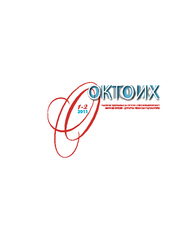Приказ основних података о документу
Запис Стефана Црнојевића на Светостефанској хрисовуљи краља Милутина
Stefan Crnojević’s Inscription on King Milutin’s Saint Stephen Chrysobull
| dc.creator | Савић, Виктор | sr |
| dc.date.accessioned | 2020-11-24T10:56:14Z | |
| dc.date.available | 2020-11-24T10:56:14Z | |
| dc.date.issued | 2011 | |
| dc.identifier.issn | 2457-5585 | |
| dc.identifier.uri | https://dais.sanu.ac.rs/123456789/9531 | |
| dc.description.abstract | Кратак запис Стефана Црнојевића из 1496. године важан је извор за сагледавање судбине Светостефанске хрисовуље. У њему се налази и извјестан број података занимљивих за мјесну историју српског књижевног језика и за историју зетско-сјеничког дијалекта. Запис представља доста вјеран транскрипт унутрашњег (из)говора његова састављача. У Стефанову идиолекту прелама се његова перцепција српскословенског као живог писаног израза у Црној Гори тога времена с његовим дијалекатски снажно обојеним матерњим говором. У тексту су најуочљивије мјесна и неоправдана вокализација, заједно с екавизмом „вишег“ стила. Као и у језику, и у писму је присутно двојство елемената из напоредних система, брзописа и (полу)устава, такође са занимљивим појединостима. Примијењен је графички инвентар који је упрошћен за потребе тадашње пословно-правне писмености. Запис има структуру својствену повељама. | sr |
| dc.description.abstract | Stefan Crnojević’s short 1496 inscription is an important source for studying the fate of the Saint Stephen Chrysobull. It also contains some facts interesting for the local history of Standard Serbian and for the history of the Zeta-Sjenica dialect. The inscription is a fairly close transcript of its compiler’s interior monologue/speech. Stefan’s idiolect reflects his perception of Serbian Church Slavonic as a living written expression of the then Montenegro with his strikingly dialectal vernacular. The text most visibly demonstrates local and unjustified vocalisation, as well as the ekavisation belonging to the „higher“ style. The writing, like the language, shows the dualism of elements from parallel systems, the cursive and the (semi-)uncial, also with interesting details. The graphemic inventory was simplified for the needs of the then commercial-legal literacy. The texts vehemently exhibit Stefan’s orientation towards Serbian Slavonic, higher culture, which was in decline, as is well demonstrated. First of all, his act of thickening the pale letters in the Chrysobull, which demanded a lot of time abroad, on the Sultan’s court, indicates his devotion to the cultural treasure that his predecessors had left behind. It is interesting to note that the inscription has a structure characteristic of charters, which also demanded our brief diplomatic analysis. At several places in the text repetitions occur, more typical of oral than of written expression. All this testifies to a man of actually modest literary culture, but of an open mind for his own tradition, who primarily belonged to practical and oral culture. | en |
| dc.language.iso | sr | sr |
| dc.publisher | Подгорица : Издавачки центар Матице српске - Друштва чланова у Црној Гори | sr |
| dc.rights | openAccess | sr |
| dc.rights.uri | https://creativecommons.org/licenses/by-nc-nd/4.0/ | |
| dc.source | Октоих | sr |
| dc.subject | Стефан Црнојевић | sr |
| dc.subject | запис | sr |
| dc.subject | Светостефанска хрисовуља | sr |
| dc.subject | историјска дијалектологија | sr |
| dc.subject | историја српског књижевног језика | sr |
| dc.title | Запис Стефана Црнојевића на Светостефанској хрисовуљи краља Милутина | sr |
| dc.title | Stefan Crnojević’s Inscription on King Milutin’s Saint Stephen Chrysobull | en |
| dc.type | article | sr |
| dc.rights.license | BY-NC-ND | sr |
| dcterms.abstract | Savić, Viktor; Zapis Stefana Crnojevića na Svetostefanskoj hrisovulji kralja Milutina; | |
| dc.citation.spage | 31 | |
| dc.citation.epage | 43 | |
| dc.citation.volume | 1-2 | |
| dc.type.version | publishedVersion | sr |
| dc.identifier.fulltext | https://dais.sanu.ac.rs/bitstream/id/39832/savic.crnojevic.2011.pdf | |
| dc.identifier.rcub | https://hdl.handle.net/21.15107/rcub_dais_9531 |

